Messari: In-depth Analysis of the Opportunities and Challenges of Polkadot
Author: Nicholas Garcia, Messari
Compiler: Anthony, Daling Think Tank
Article Highlights
In the fourth quarter, daily active accounts and new accounts grew by 64% and 49%, respectively. The surge may be attributed to user exits due to the FTX collapse, the launch of USDT, and the introduction of the nomination pool.
Since its launch in May, XCM has transmitted over 166,000 times across 70 channels. The expansion of XCM is crucial for the ongoing development of the Polkadot ecosystem. The next iteration, XCM V3, will introduce seamless crypto asset transfers, enhanced cross-chain interoperability, NFT support, and bridging with external networks.
One year after the first parachain slot auction, 35 slots have been auctioned off, binding a total of 133 million DOT (10.5% of the total supply). Regular parachain auctions will continue throughout 2023, occurring every two weeks.
The Web3 Foundation has publicly stated that Polkadot's native token DOT has transformed and is no longer considered a security. The foundation has ensured that the vision of token transformation proposed by the U.S. Securities and Exchange Commission has been addressed and has taken measures to ensure that Polkadot provides security for token holders and that its tokens comply with legal regulations.
The next iteration of Polkadot governance, OpenGov, is already running on Kusama and is expected to launch on Polkadot in the near future. OpenGov allows every decision in the network to be made based on the results of community-submitted referendums, and for the first time, multiple referendums can be conducted simultaneously, allowing for faster resolutions.
Getting Started with Polkadot
Polkadot is a nominated proof-of-stake (NPoS) blockchain network designed to support various interconnected, application-specific Layer-1 chains known as parachains. Each chain built within Polkadot uses Parity Technologies' blockchain development framework, Substrate, which allows developers to choose specific components best suited for their application-specific chains. Polkadot refers to the entire parachain ecosystem built on a single foundational platform known as the relay chain. This foundational platform does not support application functionality but accommodates all validators and is responsible for securing, managing, and connecting parachains.
Key Metrics
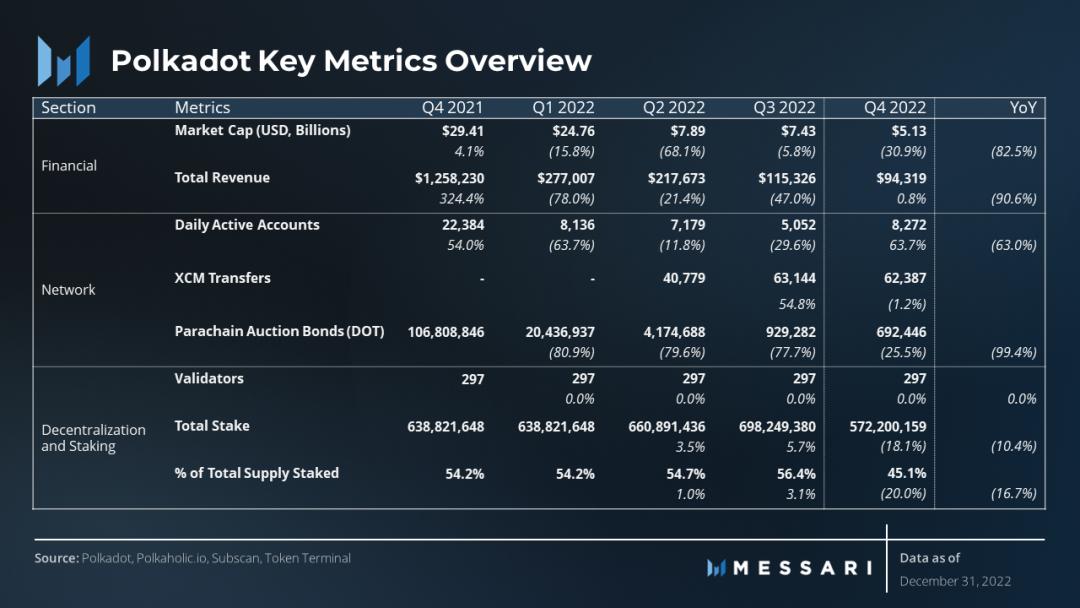 Figure 1: Overview of Key Metrics for Polkadot
Figure 1: Overview of Key Metrics for Polkadot
Note: Key metrics refer only to the Polkadot relay chain, not the parachains.
Performance Analysis
Financial and Network Overview
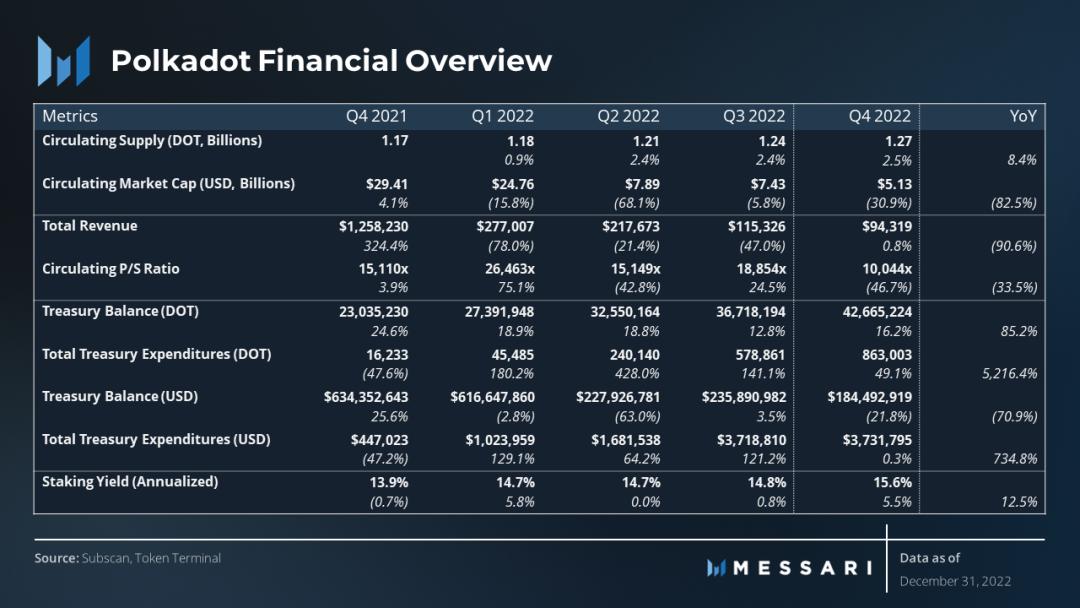 Figure 2: Financial Overview of Polkadot
Figure 2: Financial Overview of Polkadot
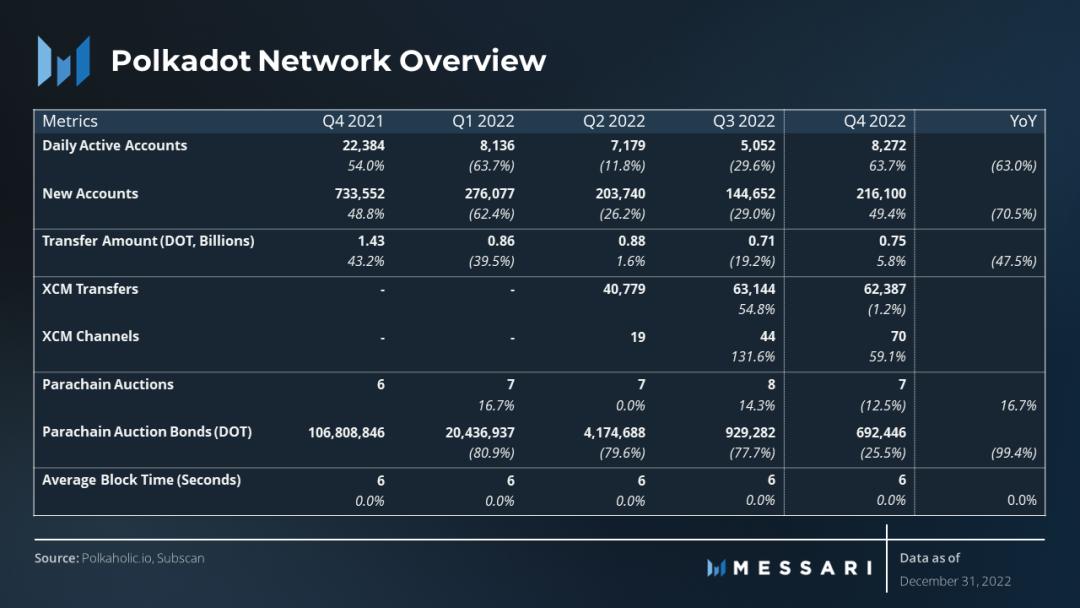
Figure 3: Network Overview of Polkadot
Note: Unless otherwise stated, performance metrics refer only to the Polkadot relay chain, not the parachains.
The FTX scandal was the most significant event in the fourth quarter of 2022, causing shockwaves and garnering global attention. As expected, Polkadot's market capitalization was affected, decreasing by 31% quarter-over-quarter. Under the influence of FTX and the overall bear market, Polkadot's market capitalization fell by 83% year-over-year.
Despite the decline in value, the network's financial condition remained stable. In the fourth quarter, quarterly revenue remained flat, and the supply of DOT increased as expected. In November, the Web3 Foundation reported that after three years of discussions with the U.S. Securities and Exchange Commission (SEC), DOT, initially offered as a security, is no longer considered a security.
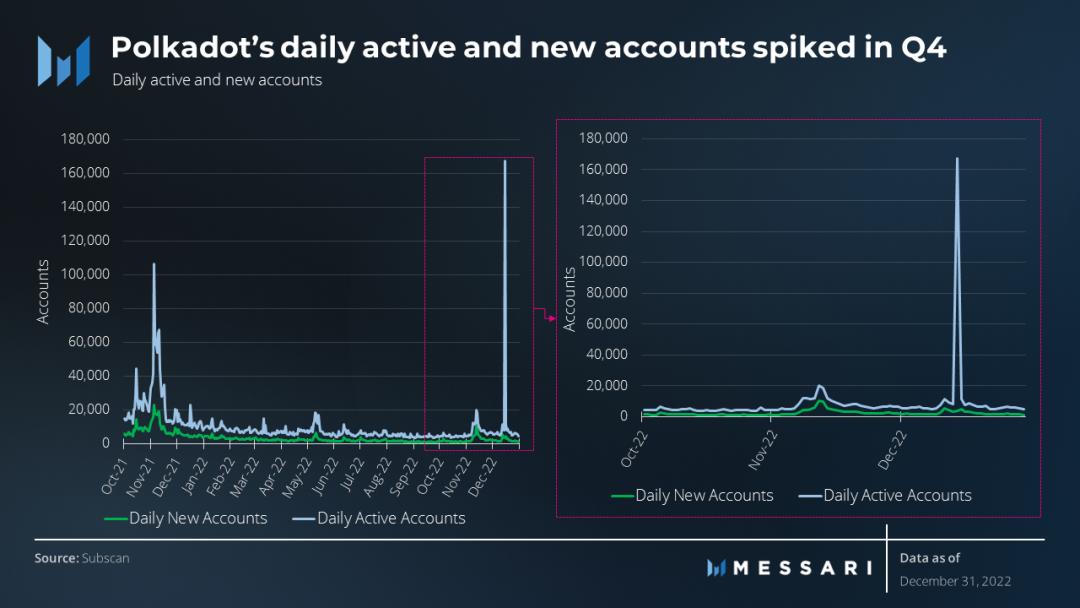 Figure 4: Daily Active Accounts and Surge in New Accounts in Q4
Figure 4: Daily Active Accounts and Surge in New Accounts in Q4
Additionally, the Polkadot relay chain demonstrated impressive quarter-over-quarter growth in Q4, arguably the strongest quarter of the year. Daily active accounts grew by 64%, and new accounts grew by 49%. The surge may be due to users leaving FTX in search of a more open, transparent, and decentralized network like Polkadot and USDT.
It is important to note that the above metrics refer only to the Polkadot relay chain, not the parachains. Therefore, these metrics do not encompass the entire ecosystem. A more accurate measure of ecosystem performance today is XCM activity.
Cross-Consensus Message Format (XCM)
Cross-Consensus Message Format (XCM)
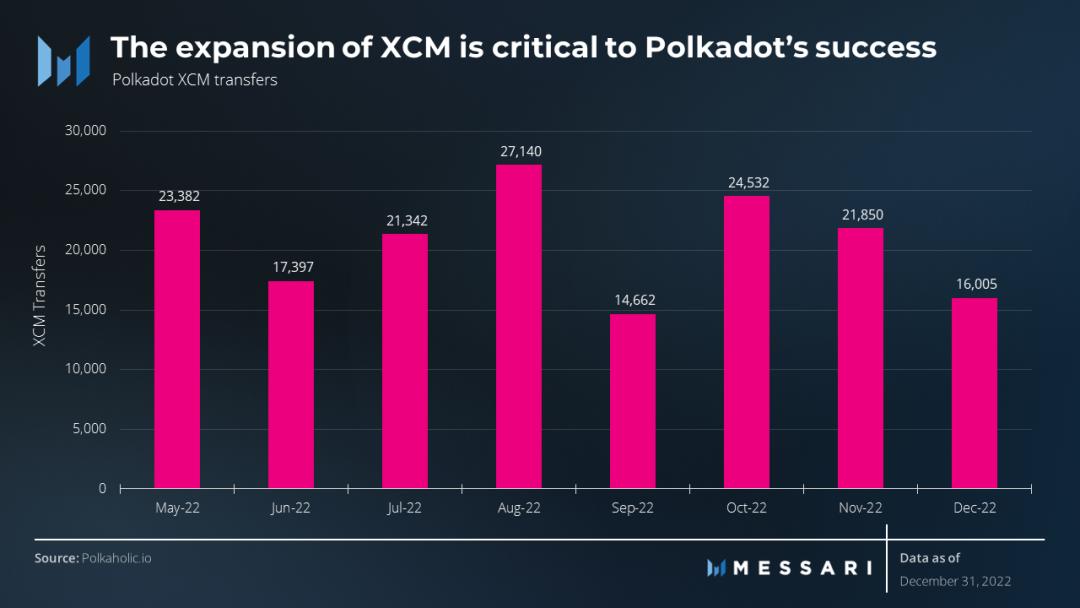 Figure 5: The Expansion of XCM is Crucial for the Success of Polkadot
Figure 5: The Expansion of XCM is Crucial for the Success of Polkadot
The Cross-Consensus Message Format (XCM) is a language that facilitates communication between parachains by enabling them to send messages. XCM messages can be transmitted through HRMP channels between parachains, from parachains to the relay chain, and even beyond the Polkadot ecosystem to other applications and base layers. XCM is versatile and serves various purposes, such as operations, asset transfers, and long-distance transmissions.
With the passage of the 60th referendum, XCM went live on the Polkadot mainnet in early May. Since its launch, XCM has transmitted over 166,000 times across 70 channels. The most popular channels include the relay chain and popular parachains like Acala, Astar, Parallel, and Moonbeam. The expansion of XCM is crucial for the ongoing development of the Polkadot ecosystem. The next iteration, XCM V3, is expected to be launched soon. XCM V3 will introduce new features, including enhanced programmability, bridging to external networks, cross-chain locking, improved fee payments, NFTs, and more.
Parachain Slot Auctions
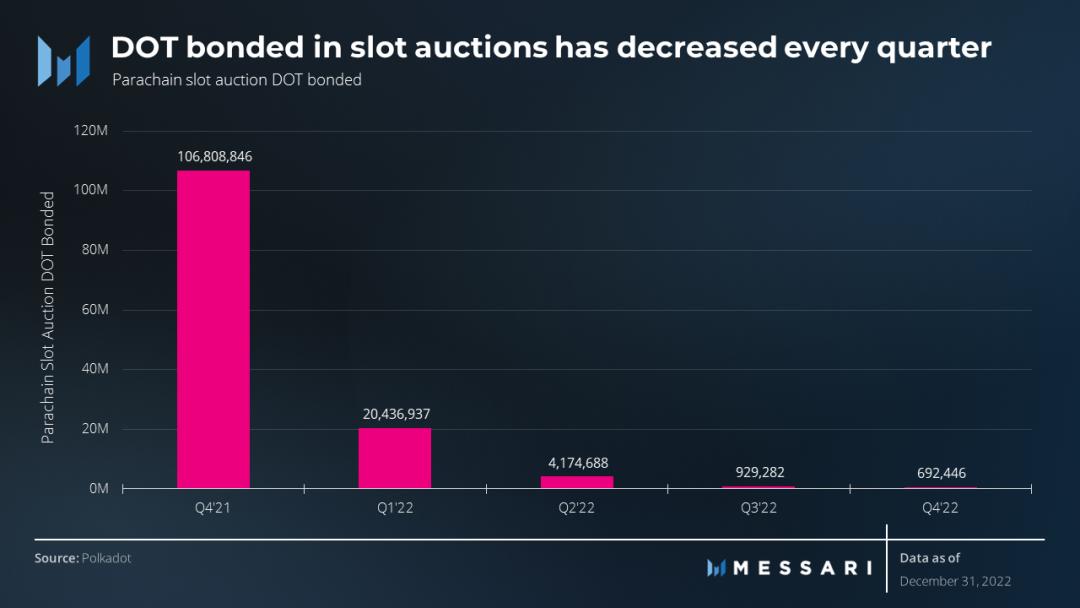 Figure 6: The Amount of DOT Bound in Slot Auctions is Decreasing Each Quarter
Figure 6: The Amount of DOT Bound in Slot Auctions is Decreasing Each Quarter
The first auction for parachain slots began in Q4 2021. As expected, the initial auctions attracted a large number of participants. Due to high expectations for the bull market, they resulted in a significant amount of DOT being bound. Since the first auction, the amount of DOT bound has decreased each quarter.
As the demand for acquired slots has lowered, more projects have been able to self-fund their slot purchases. In other words, they do not need to raise DOT from the community in exchange for their own tokens. As a result, these projects can retain a larger proportion of their native tokens, which can then be sold, distributed to the community, or retained in other ways.
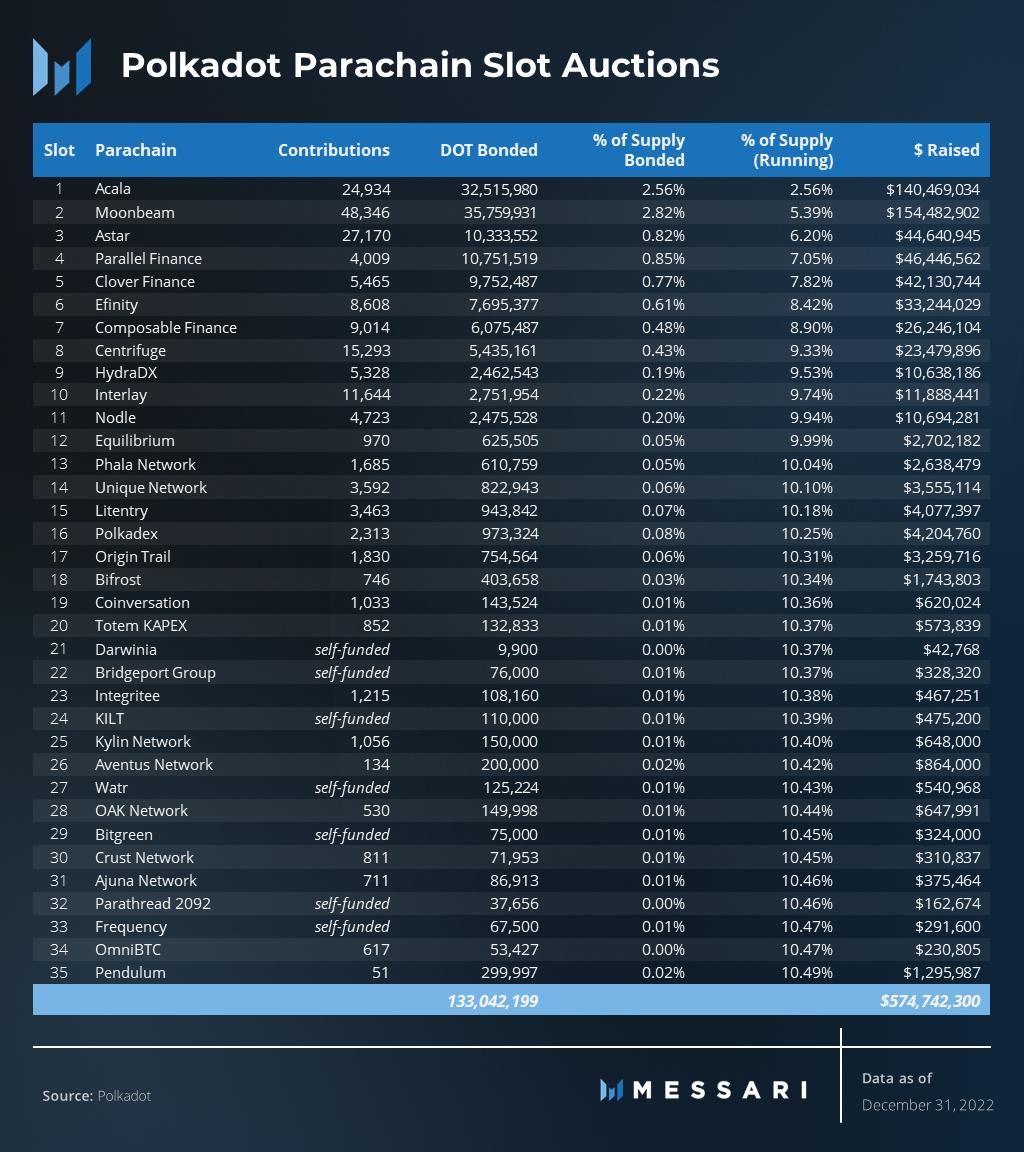 Figure 7: Data on Polkadot Parachain Slot Auctions
Figure 7: Data on Polkadot Parachain Slot Auctions
In the year following the first parachain slot auction, a total of 35 slots have been auctioned off, binding a total of 133 million DOT (10.5% of the total supply). As of now, the slot auction plan continues until February 2023, at which point the total number of slot auction sessions will reach 41, with regular parachain auctions continuing throughout 2023, occurring every two weeks. Reliable sources indicate that the Polkadot network has the capacity to support up to 100 parachains, and additional relay chains can be added in the future, increasing the number of parachains that can be supported.
It is also worth noting that the lease term for parachain slots is 96 weeks. Therefore, the first round of parachains is approaching the midpoint of their leases. Once their leases expire, a significant portion of the bound DOT will begin to flow. This situation is similar to Ethereum's upcoming Shanghai upgrade, which can serve as a reference. It will also be interesting to observe whether mature projects seek a second round of community contributions or self-fund to re-lease slots.
In Q4, seven new teams acquired parachain slots:
- Bitgreen - Bitgreen allows organizations and individuals to invest in sustainable markets, purchase high-quality tokenized carbon credits, and participate in sustainable finance. Bitgreen is a climate-positive blockchain that protects vital tropical rainforests, funds clean infrastructure, and safeguards vulnerable communities.
- Crust Network - Crust Network is a decentralized cloud storage provider that supports various storage layer protocols like IPFS and offers users instantly accessible on-chain storage capabilities. Crust's tech stack also supports data operations and computation.
- Ajuna Network - The Ajuna platform provides a simplified way for Unreal and Unity developers to build incentive layers in their games using tokenized virtual goods. Collaboration with Integritee will enable Ajuna to run the entire game engine in a trusted execution environment, creating a fast, secure, and scalable decentralized gaming ecosystem. Ajuna's ultimate goal is to develop an interoperable, decentralized gaming ecosystem where virtual goods can be exchanged.
- Parathread 2092 - This is a well-known project within the Polkadot community but has chosen to remain temporarily anonymous before reaching the next milestone.
- Frequency - Frequency allows applications to collaborate rather than compete when submitting transactions, enabling large-scale Web3 social interactions. Frequency provides developers with four core features: no worries about overpriced capacity economics, scaling user bases with non-token users and authorizations, off-chain data broadcasting to maximize throughput, and shared models to standardize data interoperability.
- OmniBTC - OmniBTC is a decentralized full-chain liquidity aggregation protocol (DOLA) centered around a single funding pool for each public chain, using cross-chain interoperability protocols like Wormhole and LayerZero as bridges, with Sui public chain as the settlement hub. The single funding pool for each public chain allows any user on any chain to provide liquidity for the protocol. The cross-chain messaging protocol interconnects individual funding pools, with the Sui public chain serving as a clearinghouse, bringing security, concurrency, and low fees to the protocol.
- Pendulum - Pendulum aims to establish the missing link between fiat currencies and the DeFi ecosystem through a fiat-optimized smart contract blockchain. Pendulum will allow DeFi applications to connect to foreign exchange markets, establish AMMs to introduce scalable fiat liquidity pools, and create yield opportunities for fiat holders.
Active Parachain News
Kilt has become the first parachain to successfully migrate from Kusama to Polkadot, marking an important milestone. KILT, which provides autonomy and verifiable blockchain identity solutions, took this step as larger enterprises began adopting its technology, necessitating higher stability and security. Kusama has been a valuable testing ground for KILT, allowing for rapid development and experimentation of applications, but the KILT team needed to provide a more secure environment for their enterprise clients. The stability and security offered by Polkadot will enable KILT to further advance its Web3 journey, as Kusama provided valuable feedback in the process.
Astar Network has partnered with Japan's leading mobile operator NTT Docomo to promote the widespread adoption of Web3 and its social applications. NTT Docomo will invest up to $4 billion in decentralized technology, and the two companies will collaborate to achieve sustainable development goals, promote Web3 adoption through education, and cultivate Web talent. The Japan Blockchain Association has recognized Astar as the recipient of the Annual Product Award, and its founder and CEO Sota Watanabe has received the Annual Person Award for two consecutive years.
Treasury
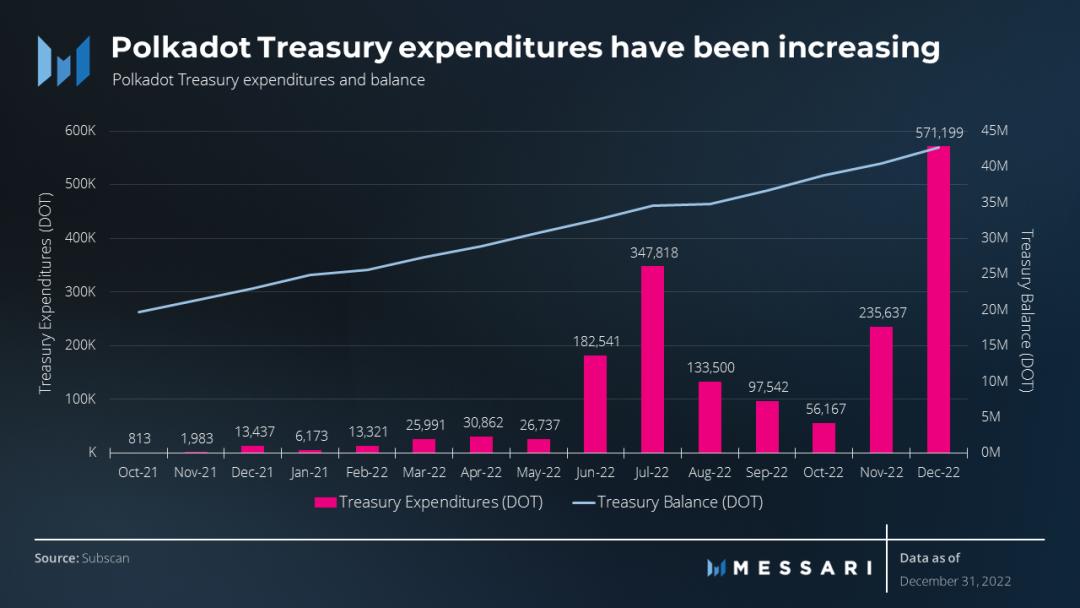 Figure 8: Treasury Spending in Polkadot has Been Increasing
Figure 8: Treasury Spending in Polkadot has Been Increasing
As of the end of Q4, the treasury holds 43 million DOT ($184 million), an 85% year-over-year increase. The treasury experienced its highest monthly spending this quarter, totaling 863,000 DOT. Most of this spending, approximately 571,000 DOT, was conducted in December through the Ethereum-to-Polkadot Snowbridge, becoming the largest funding expenditure of the year.
During 2022, the treasury spent 1.8 million DOT ($8 million). The implementation of the new OpenGov model in 2023 may lead to increased treasury usage, as discussed later in this report.
Developer Activity
In terms of developer activity, Polkadot has consistently been one of the most active platforms, which is often a key indicator of future development, adoption, and overall success rates. According to GitHub commits, Polkadot's development activity reached an all-time high in Q3. This growth was also highlighted in Electric Capital's annual developer report, which showed that Polkadot has grown from fewer than 200 developers in 2018 to over 2,000 today, becoming the second-largest community of full-time developers with 764 full-time developers. It is also the fastest ecosystem to reach 200 full-time developers, achieving this in just 2.2 years, compared to an average of over 4 years. However, the total number of developers in Polkadot grew by only 2% in 2022, indicating that the growth rate is slowing.
Additionally, the Web3 Foundation and leading online learning platform edX have jointly launched a foundational development course for Polkadot to support its developer community. The annual Sub0 developer conference was held on November 28-29. In October, Polkadot founder and industry figure Gavin Wood announced he would step down as CEO of Parity. Despite this change, he remains a major shareholder in the company and now serves as Chief Architect, allowing him to focus more on development work.
Polkadot offers a comprehensive Web3 ecosystem, providing various ways to build and integrate Web3 solutions at every level of the blockchain stack. The Polkadot ecosystem includes projects focused on every layer of the stack, including underlying infrastructure and relay chains, as well as other areas such as runtime pallets, parachains, Layer-2s, developer tools, wallets, block explorers, APIs, oracles, and more.
Decentralization and Staking
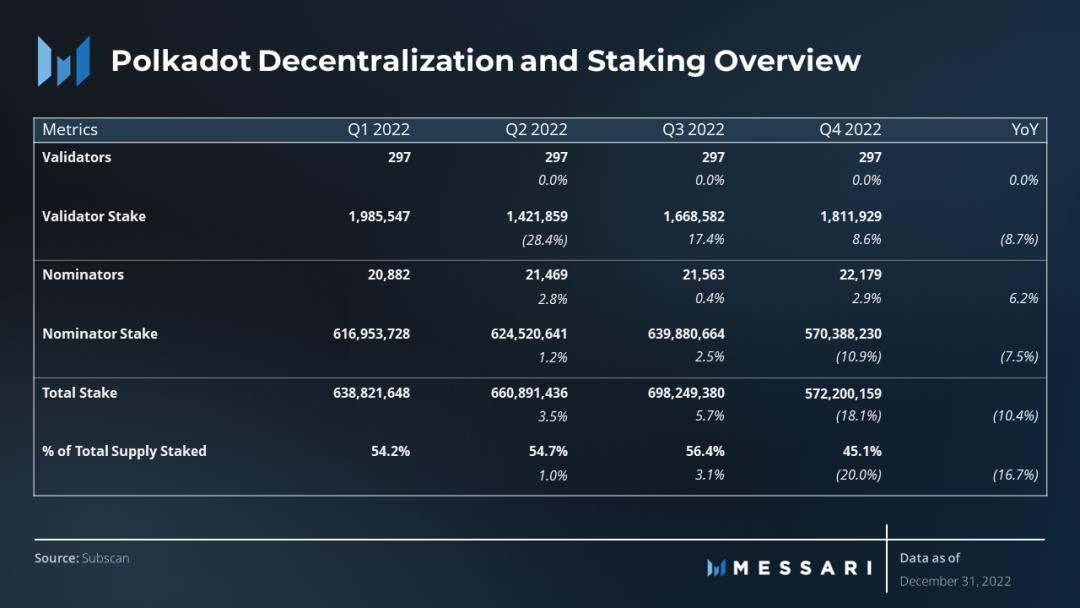 Figure 9: Overview of Polkadot Decentralization and Staking
Figure 9: Overview of Polkadot Decentralization and Staking
Polkadot uses a nominated proof-of-stake (NPoS) consensus. Unlike delegated proof-of-stake (DPoS), NPoS restricts nominators. Previously, there was a minimum DOT requirement to earn rewards through nomination, but this changed with the introduction of the nomination pool in Q4.
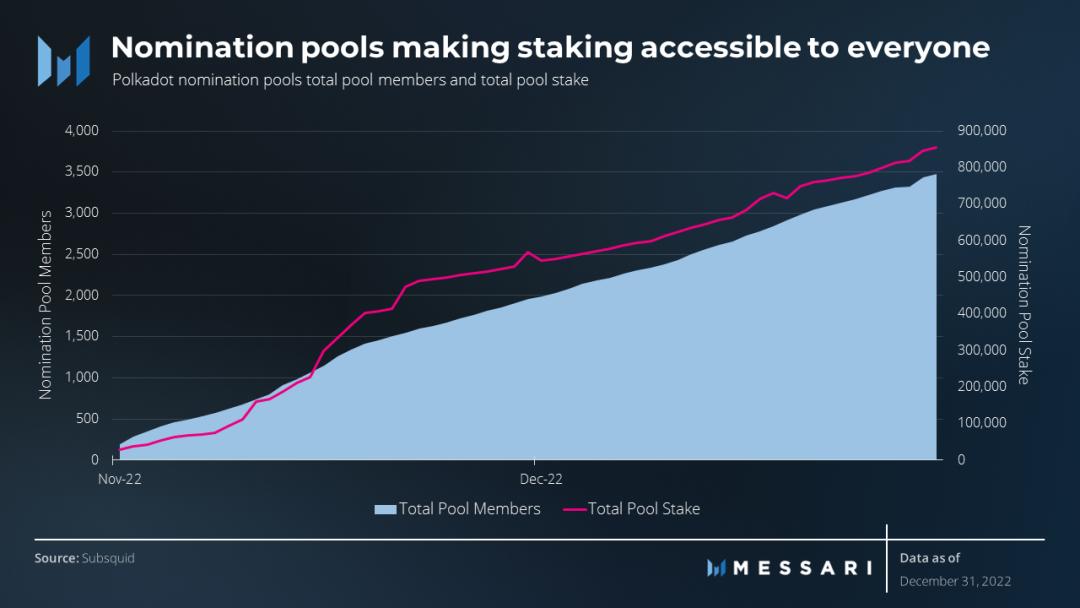
Figure 10: Nomination Pools Allow Everyone to Stake
Nomination pools are a new feature of Polkadot's staking system. They allow multiple DOT holders to pool their tokens together and act as a single nominator, supporting a selected group of validators with their total stake. Rewards are distributed proportionally among pool members, with no commission charged. These pools are hosted on-chain and are part of the Polkadot runtime, making them upgradeable, secure, and fully integrated into the relay chain. Nomination pools allow anyone to stake with as little as one DOT and are supported by staking dashboards and popular wallets like Nova Wallet, Talisman, and SubWallet.
Since the launch of nomination pools at the end of Q3, the number of pool members has steadily increased. By the end of Q4, there were 3,500 members holding a total of 850,000 DOT.
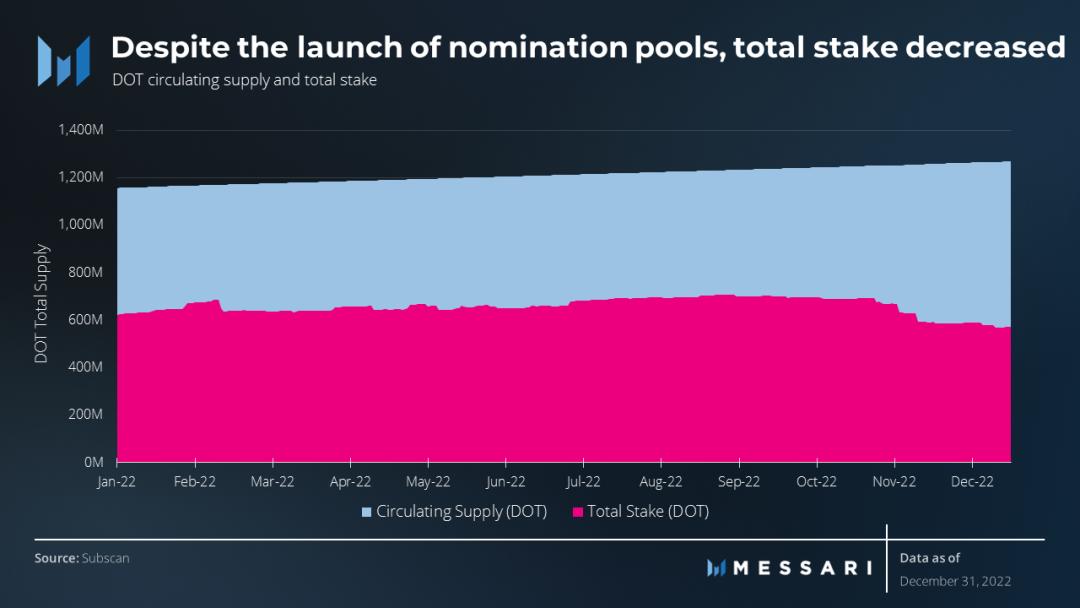 Figure 11: Total Staking Amount Continues to Decrease Even with the Launch of Nomination Pools
Figure 11: Total Staking Amount Continues to Decrease Even with the Launch of Nomination Pools
Interestingly, despite the launch of nomination pools, Polkadot's staking metrics declined in Q4. The total holdings decreased by 18% quarter-over-quarter, from 698 million to 572 million, resulting in the percentage of circulating supply dropping from 56% to 45%.
Governance
Open Governance
 Figure 12: Changes and Benefits of Polkadot Open Governance
Figure 12: Changes and Benefits of Polkadot Open Governance
In June, Gavin Wood announced OpenGov (previously known as Governance V2) as the next iteration of the Polkadot governance system during Polkadot Decoded. OpenGov is a significant upgrade that marks the beginning of a new era for Polkadot. In OpenGov, the community will play a central role in guiding project direction, rather than being led by Parity and Web3 as in the past.
OpenGov allows every decision in the network to be made based on the results of community-submitted referendums. For the first time, multiple referendums can be conducted simultaneously, allowing for faster resolutions. Proposals are divided into different tiers, each with specific conditions, such as designated voting periods, the number of valid votes at the same time, and required DOT deposits. As the tier increases, the conditions for passing proposals become more stringent.
OpenGov replaces the council and technical committee with a new entity called Fellowship. Fellowship plays three main roles in Polkadot's governance and community:
- Serving as technical advisors to the governance system
- Maintaining and developing core protocols and code
- Educating and promoting Polkadot technology
Fellowship operates similarly to a developer DAO, with all users eligible to join, reducing concerns about centralization. It has a ranking system with multiple mechanisms to ensure decentralization. These include a charter, community voting for senior positions, and checks and balances to limit leadership control. Fellowship cannot be elected through referendums but can whitelist elected members, making it easier and faster for them to be elected.
To facilitate the seamless implementation of OpenGov, a Collectives parachain has been launched on the Polkadot network. The Collectives chain hosts on-chain collectives that serve the Polkadot ecosystem. These collectives provide a home for Fellowship and the Polkadot Alliance, an on-chain organization aimed at promoting the reasonable use of the Polkadot brand and open-source code.
In November, OpenGov was launched on Kusama, and in December, the two governance bodies coordinated their voting for the first time to approve an on-chain proposal, including Fellowship. This vote was a real demonstration of the system's functionality, showing users what to expect from the Polkadot network in the near future.
Governance and Network Upgrades in Q4 2022
Polkadot combines a multi-faceted governance system with autonomous decision-making, allowing for network upgrades without hard forks.
In Q4 2022, Polkadot users enacted a total of 13 referendums.
- Referendum 74 - Second batch of Statemint HRMP channels
- Referendum 77 - Gossamer sustainability grant
- Referendum 78 - Initial configuration of the nomination pool
- Referendum 79 - Runtime upgrade v9291 on Polkadot + v9290 on Statemint
- Referendum 80 - USDT token sufficiency on Statemint
- Referendum 81 - Collective good common parachain
- Referendum 82 - Establishment of Statemint HRMP channels
- Referendum 84 - Runtime upgrade v9300
- Referendum 85 - Restoration of the kapex parachain
- Referendum 87 - Upgrade Statemint to v9320
- Referendum 90 - Redefine nomination limits
- Referendum 92 - Cancel runtime upgrade v9320
- Referendum 95 - Upgrade Statemint to v9330
During Q4 2022, seven non-fork runtime upgrades were implemented:
- Polkadot V0.9.30 - This low-priority version does not contain significant changes but includes various client, runtime, and miscellaneous changes. Changes in this version include adding the --header flag to overhead and storage commands, removing discarded blocks and states, and adding constant multiplier commands to transaction payment pallets.
- Polkadot V0.9.31 - This low-priority version includes two runtime migrations to correctly migrate weights to V2 and bind the use of call operations.
- This version includes a series of bug fixes, making the --database CLI parameter case-insensitive, resolving issues with the transaction pool after warp synchronization, and fixing the payment_queryInfo RPC to be compatible with the latest runtime changes.
- Polkadot V0.9.33 - This medium-priority version updates paritydb, removes sp_tasks::spawn and related host functions, and includes other miscellaneous changes.
- Polkadot V0.9.34 - This version supports duplicate destruction in asset pallets and includes various bug fixes and changes for OpenGov.
- Polkadot V0.9.35 - This runtime-only version does not include the node client version and includes various low-importance changes, such as introducing a generic message queue pallet, removing some crates for publishing to crates.io, and including an RPC server with http/ws on the same socket.
- Polkadot V0.9.36 - This version has been marked as a high-priority upgrade, urging node operators to upgrade as soon as possible. Changes in this version include using log_target in consensus-related pallets, storing the last minimal active key on-chain, fixing erroneous rate limiting, and updating weights.
Sustainability
Polkadot focuses on environmental responsibility and sustainability. A study by the Crypto Carbon Ratings Institute shows that among six major proof-of-stake protocols, Polkadot has the lowest energy usage and carbon emissions. In October, Bitgreen, Sequester, and Evercity proposed to work together to measure the carbon footprint of the entire Polkadot and Kusama networks and offset emissions through carbon credits within the Dotsama ecosystem.
Roadmap
During the crypto winter of 2022, Polkadot is actively developing and launching its community. In 2023, Polkadot will continue to emphasize the capabilities and features of expanding the network. Currently, XCM V3 and OpenGov have launched on Kusama and will soon launch on Polkadot. Other upcoming updates include:
- Common good parachains - Parachains that benefit the entire Polkadot ecosystem. Common good parachains allocate relay chain access through on-chain governance rather than the traditional parachain slot auction process. In August, Parity announced that two new public good chains are on the way. The first, called Collective, is live on the mainnet and allows teams to work together in a trustless manner. The initial users of Collective are Fellowship and Alliance. The second public good chain will be a bridging hub connecting Polkadot with other blockchains, currently running only on Kusama.
- Asynchronous support - The first major optimization for parachain consensus since launch. Asynchronous support aims to reduce parachain block times to 6 seconds, increase block space by 10 times, and allow for the reuse of parachain blocks even when they have not entered the relay chain. Parity expects asynchronous support to increase the number of transactions processed by the network to between 100,000 and 1,000,000 per second.
- Parathreads - Pay-as-you-go parachains that can be launched and operated without participating in parachain slot auctions. Parathreads are as secure as parachain blocks and serve as an alternative entry point for rapidly iterating development teams to enter the ecosystem. Parathreads are planned for release in the first half of 2023.
Conclusion
Despite 2022 being a challenging year for the crypto industry, the Polkadot ecosystem has thrived and achieved positive growth and progress.
The year began with the first connection between a parachain and the relay chain. Throughout the year, parachain slot auctions were held every two weeks, resulting in a total of 35 parachains and 133 million DOT (10.5% of the total supply) being bound by the end of the year. Importantly, the parachain ecosystem remains in its early stages.
In Q2 2022, the Cross-Consensus Message Format (XCM) was introduced, unlocking the network's cross-chain capabilities. Throughout the year, 70 channels facilitated 166,000 transfers. The upcoming XCM V3 is expected to significantly enhance functionality, adding new features such as enhanced programmability, bridging to external networks, cross-chain locking, improved fee payments, NFTs, and more. The continued growth of XCM is crucial for the success of Polkadot.
In Q4, Polkadot introduced nomination pools, allowing anyone with one DOT to participate in staking. Polkadot's validators are evenly distributed by total staking amount, and stable decentralization and staking metrics throughout the year indicate that the ecosystem is operating well.
Entering 2023, Polkadot boasts the second-largest developer community in the crypto asset space. With the upcoming launches of OpenGov, parathreads, XCM V3, asynchronous support, and the ongoing advancement of WASM smart contracts, a foundation for future innovation is being laid. There is much to look forward to in the Polkadot ecosystem.










